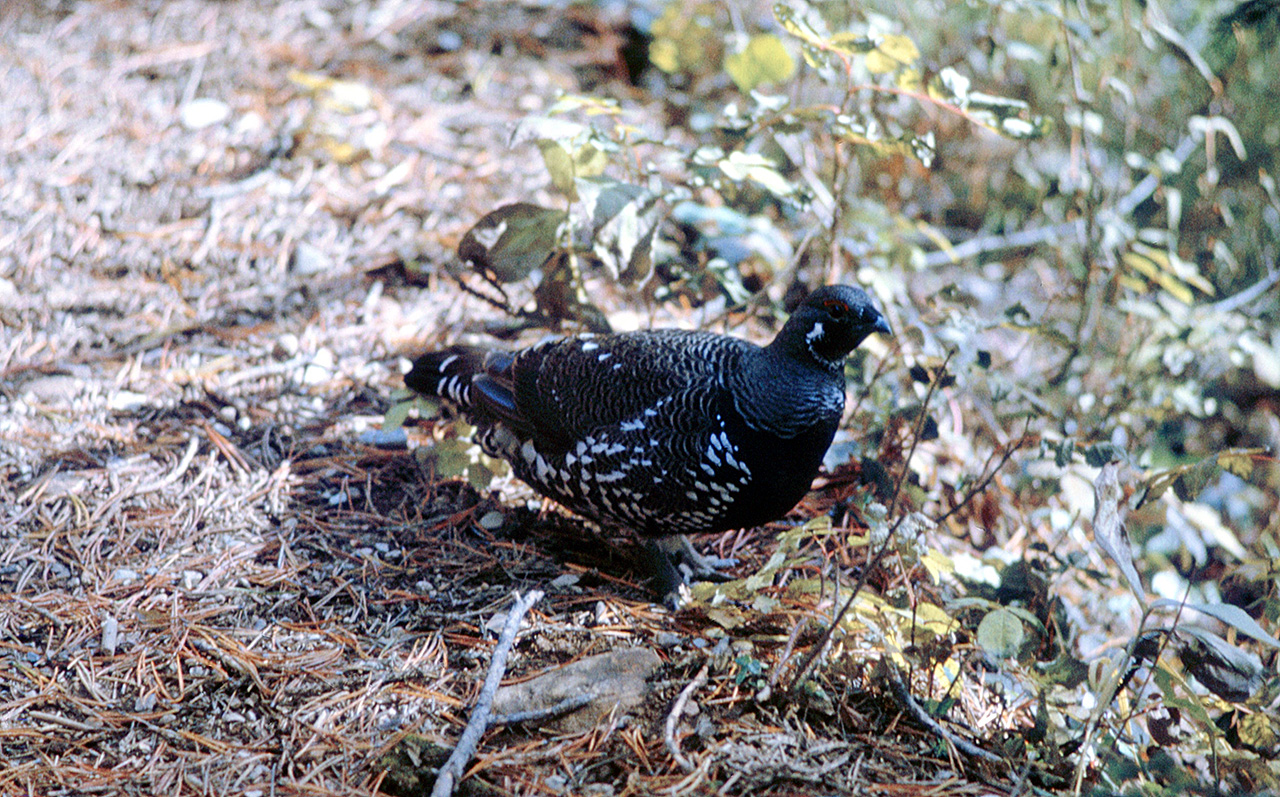Canada has multiple ecosystems, ranging from lush forests of British Columbia, the prairies of Western Canada, to the tundra of the Northern Canada. With a large land mass, and small population density, the wildlands of Canada provide important habitat for many animals, both endangered and not. Canada is home to approximately 70.000 known species of plants and animals – and perhaps many more that have yet to be discovered.
More than 400 species are listed as being at risk of extinction in Canada. The regions with the most endangered or threatened species are those in which humans have had the greatest impact on the environment.
The elk, or wapiti (Cervus canadensis) is one of the largest species of deer in the world, and one of the largest land mammals in North America and eastern Asia. It was long believed to be a subspecies of the European red deer. This animal should not be confused with the larger moose (Alces alces), to which the name “elk” applies in Eurasia. Apart from the moose, the only other member of the deer family to rival the elk in size is the south Asian sambar.
Grouse are a group of birds from the order Galliformes. Grouse inhabit temperate and subarctic regions of the northern hemisphere, from pine forests to moorland and mountainside. Grouse are heavily built like other Galliformes such as chickens. These birds feed mainly on vegetation-buds, catkins, leaves, and twigs-which typically accounts for over 95% of adults’ food by weight. Thus their diets vary greatly with the seasons.
Grouse inhabit temperate and subarctic regions of the northern hemisphere, from pine forests to moorland and mountainside. Grouse are heavily built like other Galliformes such as chickens. Forest species flock only in autumn and winter, though individuals tolerate each other when they meet.
Prairie species are more social, and tundra species are the most social, forming flocks of up to 100 in winter. All grouse spend most of their time on the ground, though when alarmed, they may take off in a flurry and go into a long glide.
The Gray-crowned Rosy Finch is a species of passerine bird in the family Fringillidae native to Alaska, western Canada, and the north-western United States. Due to its remote and rocky alpine habitat it is rarely seen. There are currently six recognized subspecies. It is one of four species of rosy finches.
The ancestor of the three species of North American rosy finches migrated from Asia. All rosy finches live in an alpine or tundra environment. The Gray-crowned Rosy Finch has a wide range and large numbers throughout Alaska, and western Canada and the United States. Rosy finches are very environment-specific. In the summer their breeding habitat is rocky islands and barren areas on mountains from Alaska to the northwestern United States. These mountain breeding areas tend to be snowfields and rocky scree. When not breeding they form large flocks of over 1000 individuals.
The hoary marmot is a species of marmot that inhabits the mountains of northwest North America. Hoary marmots live near the tree line on slopes with grasses and forbs to eat and rocky areas for cover. It is the largest North American ground squirrel and is often nicknamed “the whistler” for its high-pitched warning issued to alert other members of the colony to possible danger.
The hoary marmot is a large, bulky, ground squirrel, with short, heavy limbs, and a broad head. The hoary marmot inhabits mountainous environments from sea level to 2,500 metres elevation, through much of Alaska, western Canada, and the extreme northwest of the contiguous United States. Hoary marmots are diurnal and herbivorous, subsisting on leaves, flowers, grasses, and sedges. They live in colonies of up to 36 individuals, with a home range averaging about 14 hectares. Each colony includes a single, dominant, adult male.
The mountain goat (Oreamnos americanus), also known as the Rocky Mountain goat, is a large-hoofed mammal found only in North America. Despite its vernacular name, it is not a member of Capra, the genus that includes the wild goat, Capra aegagrus, from which the domestic goat is derived.
A subalpine to alpine species, it is a sure-footed climber commonly seen on cliffs and ice. The mountain goat inhabits the Rocky Mountains and Cascade Range regions of North America, from Washington, Idaho and Montana through British Columbia and Alberta, into the southern Yukon and southeastern Alaska.
